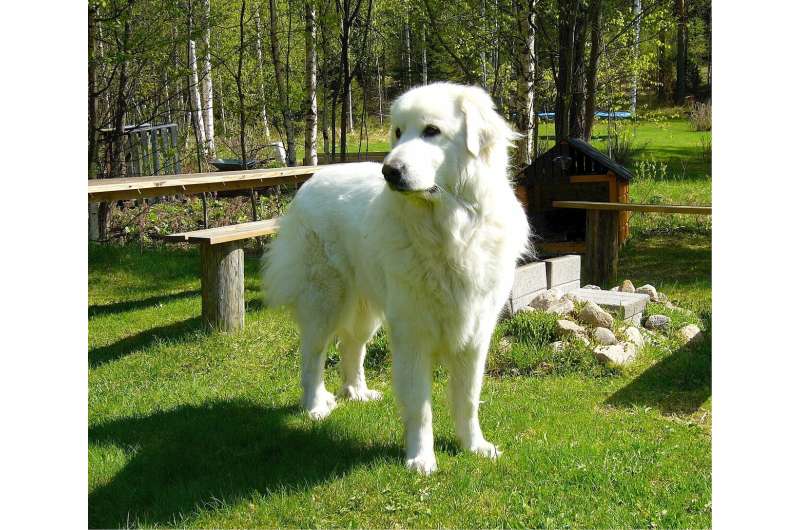Credit: CC0 Public Domain
Across a wide range of domesticated animals the same morphological, physiological and behavioural traits appear to change together in a non-random way. For instance, many domesticated animals have white patterns in their coat and floppy ears, and most are more docile and tame than their wild ancestors. This phenomenon where traits change together in domesticated species, compared to their wild ancestors, is known as the domestication syndrome. However, recently a scientific discussion of the mechanism and even the existence of this syndrome has caught on.
A group of researchers from Stockholm University, led by Dr. Christina Hansen Wheat, have now added to this discussion with a study published in Evolution Letters on April 11th 2020. Using 78 different dog breeds, Dr. Hansen Wheat and colleagues formally tested whether there is evidence for the domestication syndrome in dogs.
Specifically, they quantified whether the look of different dog breeds (floppy ears, curly tails and white pigmentation) predicts how those breeds behave (playfulness, sociability, fearfulness, aggression). Because the domestication syndrome has been argued to arise from a singular mechanism, all of these traits are expected to change together within dog breeds. However, no such covariation among these traits was observed, thereby contradicting earlier hypotheses that the domestication syndrome originates from a single mechanism. But more importantly, the study also calls into question if we are currently viewing the effects of domestication in the right way.
"For dogs, the issue is that we are trying to infer what happened when we domesticated the species at least 15,000 years ago by looking at the dogs we have today," says Dr. Christina Hansen Wheat, "but the dogs we have today are not likely to be representative of the early dogs our forefathers domesticated."
Present day dogs are bred for very specific purposes and breed requirements vary drastically in terms of both appearance (i.e. morphology) and behaviour. This has resulted in an extreme variation among dog breeds—just picture a Chihuahua, a Labrador Retriever, and a Great Dane standing next to each other. They look dramatically different, and if you throw a stick, one breed is more likely to respond than others. For most dog owners, the researchers results, finding that morphology and behaviour do not covary among modern day dog breeds, will perhaps not be particularly surprising. However, it is nevertheless the first time that this has been formally tested and it adds valuable information to the discussion about the domestication syndrome, our expectations to the alterations that we see in domesticated animals and which traits are even relevant for this discussion.
Dogs, and other domesticated species, have experienced extensive artificial selection to create breeds with certain traits enhanced for greater production yield, functionality or esthetics. "These improvement traits likely have little to do with the traits that were important during early stages of domestication. Unfortunately, because dog domestication happened such a long time ago, we do not have any records of what the first dogs looked or behaved like," says Christina Hansen Wheat. "This is problematic when forming hypotheses about the domestication process, because when we base our theories on the dogs we see today, we are primarily looking at improvement traits and not actual domestication traits. Recognizing and identifying the difference between domestication traits and improvement traits is important, but can also be challenging."
Looking forward, the researchers now wonder whether the lack of covariance between morphology and behaviour in dogs is due to a decoupling of independent domestication traits, these traits never having covaried, or whether it is because we are applying a domestication syndrome hypothesis to traits that are not actual domestication traits, but rather improvement traits.
More information: Christina Hansen Wheat et al, Morphology does not covary with predicted behavioral correlations of the domestication syndrome in dogs, Evolution Letters (2020). DOI: 10.1002/evl3.168
Provided by Stockholm University
























